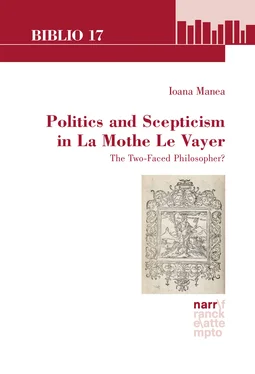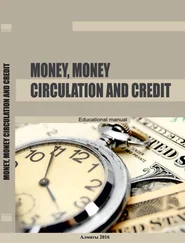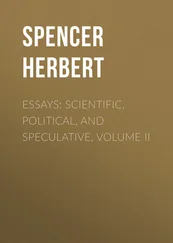1 ...6 7 8 10 11 12 ...15 Since the sceptical philosopher is neither the enemy of mockery, nor angry that he is reproached for his asinine behaviour, he will well bear me to compare him with Buridan’s ass, talked about by our proverbs, which placed between two hay stacks, did not know towards which one to rush. The same thing happens to the sceptical philosopher in the middle of the equality of reasons that he sees and examines without prejudice, his mind remaining in such equilibrium that it does not lean towards one side or the other.
Le sceptique n’étant pas ennemi de la raillerie, ni fâché qu’on lui reproche son ânerie, souffrira bien que je le compare ici à l’âne de Buridan, dont parle un de nos proverbes, lequel mis entre deux bottes de foin, ne savait sur laquelle se ruer. Car il lui en arrive de même dans l’égalité des raisons qu’il voit et examine sans prévention, son esprit demeurant dans un tel équilibre qu’il ne penche pas plus d’un côté que de l’autre.22
In addition to the association with the name of a philosopher who, like the followers of scepticism, has broken away from most of the philosophers of his time,23 the example that has just been mentioned exploits the connections between the sceptics and the ass. “Topos of the anti-dogmatic humanism” (“ topos de l’humanisme anti-dogmatique”),24 the ass, which is repeated in the text through a word that is derived from it (asinine behaviour, “ânerie”), is related to the sceptical philosophers because of the ignorance that is usually attributed to it.25 Suggested by the example of Buridan’s ass, irresolution is, in the case of the sceptical philosopher, the consequence of the ignorance that he fully acknowledges. The consequence of the irresolution, the épokhè or the suspension of judgement is instantaneously followed by the tranquillity of the mind and of the soul:
For the shadow does not follow so inseparably the body as the épokhè is immediately reached by these two companions, the ἀ ταραξ ί α concerning the opinions – which is a state or a posture of mind exempt from all the turmoil and agitation – and the μετριοπ ά θεια regarding the passions, which it moderates and governs according to the laws and prescriptions of the right reason.
Car l’ombre ne suit point si inséparablement le corps que l’ épokhè est aussitôt atteinte de ses deux divines compagnes l’ ἀ ταραξ ί α en ce qui regarde les opinions – qui est un état ou assiette d’esprit hors de tout trouble et agitation – et la μετριοπ ά θεια aux passions, qu’elle modère et régit selon les lois et prescriptions de la droite raison.26
By affording its followers not to give an absolute value to the results reached by the activity of their minds and souls, the épokhè preserves them from the disturbance that accompanies the stubbornness prompting the dogmatic philosophers to never abandon their opinions. The tranquillity that the suspension of judgement provides to the disciples of scepticism comes from a certain indifference to the different opinions on the same phenomenon. The contradictions resulting from the practice of the “decalogue” formed by the ten tropes of Sextus bring about a peace of mind that materialises in a certain detachment from the different manners in which a phenomenon can be viewed.
1.5 The Contradictions: Instrument against Stubbornness
The end of the intellectual road covered by the sceptical philosopher, the suspension of judgement is the consequence of the oppositions among the opinions considered as equally plausible. However, when he thinks about the theoretical mechanisms underlying his approach to the épokhè , La Mothe Le Vayer clearly reveals the out of the ordinary character of some of the arguments that he uses for the purpose of his argument:
These doubts and paradoxical opinions are as useful to the sceptics as it is for the music masters to take the right key a little bit too high or too low in order to bring back those who are discordant; their new and strange feelings having the same effect for pulling us from the flow of the multitude, from which we cannot go far enough.
Ces doutes et ces opinions paradoxiques sont utiles aux sceptiques, comme aux maîtres de musique de prendre un peu plus haut, ou plus bas que le juste ton, pour y ramener ceux qui ont discordé ; leurs sentiments nouveaux et étranges ayant le même effet pour nous tirer du courant de la multitude, dont nous ne pouvons trop nous écarter.1
In other words, the “paradoxical” or surprising opinions (“opinions paradoxiques”)2 are the basis of an approach that uses exaggeration in order to reach moderation. The writer does not seek to advocate the sometimes utterly disconcerting views of a phenomenon, which he includes in the juxtaposition of various opinions that underlies his works, but to weaken the absolute authority which is attributed by people to the beliefs that they usually hold. The reason why the “multitude” is the target of this approach comes from the fact that, according to La Mothe Le Vayer, there is “nothing more stupid than it” (“rien de plus sot”) and “there are no other opinions more certainly false, than those which are the most universally received” (“il n’y a guère d’opinions plus assurément fausses, que les plus universellement reçues”).3 Despite the domination that they exert over the establishment of commonly held opinions, the people are defined as a “beast with so many different heads” (“bête à tant de têtes différentes”),4 which highlights the irrational nature inherent in any of its numerous members. Consequently, the consensum gentium is not an element that argues for, but against an opinion. In order to fight against the authority of common opinions, La Mothe Le Vayer chooses to juxtapose them with contrary opinions. In so doing, he does not try to defeat the followers of the commonly accepted opinions, but to confuse them.5 More precisely, the right key sought for by the author aims at encouraging stubborn people or dogmatic philosophers to question the absolute value that they attribute to their convictions. The contradictions cultivated by the writer must, through the shock that they are supposed to provoke, call into question the certainties of the individuals who, usually, do not abandon their opinions.
Hence, the author uses the contradictions which abound in his works in order to attack, on the one hand, the opinions that belong to the common doxa and, on the other hand, the so-called knowledge of dogmatic philosophers. Furthermore, when mentioning the individuals who form the “multitude”, he shows that they come from all the social categories, namely the most well-to-do, and apparently the most educated as well as the most humble and ignorant:
[…] the witless judgements of an ignorant people, which can be found wherever there is the multitude; which drapes itself in silk as well as in the rough woollen fabric; which wears the cassock as well as the porters’ hooks, which attends the gilt studies as well as the fairs, because the people that we are talking about are made up of all sorts of professions.
[…] les sots jugements d’un peuple ignorant, lequel se trouve partout où est la multitude ; qui se pare de soie aussi bien que de bure ; qui porte la soutane aussi bien que les crochets, et qui hante les cabinets dorés, aussi bien que les foires, puisque toute sorte de professions composent le peuple dont nous parlons.6
The clothes that they wear and the jobs that they do distinguish the individuals only apparently. Thus, the clergymen or politicians are far from constituting, as they pretend, an intellectual elite. As highly placed as they may be in the social hierarchy, the individuals can reason as trivially as the most insignificant of their subjects.
Читать дальше












